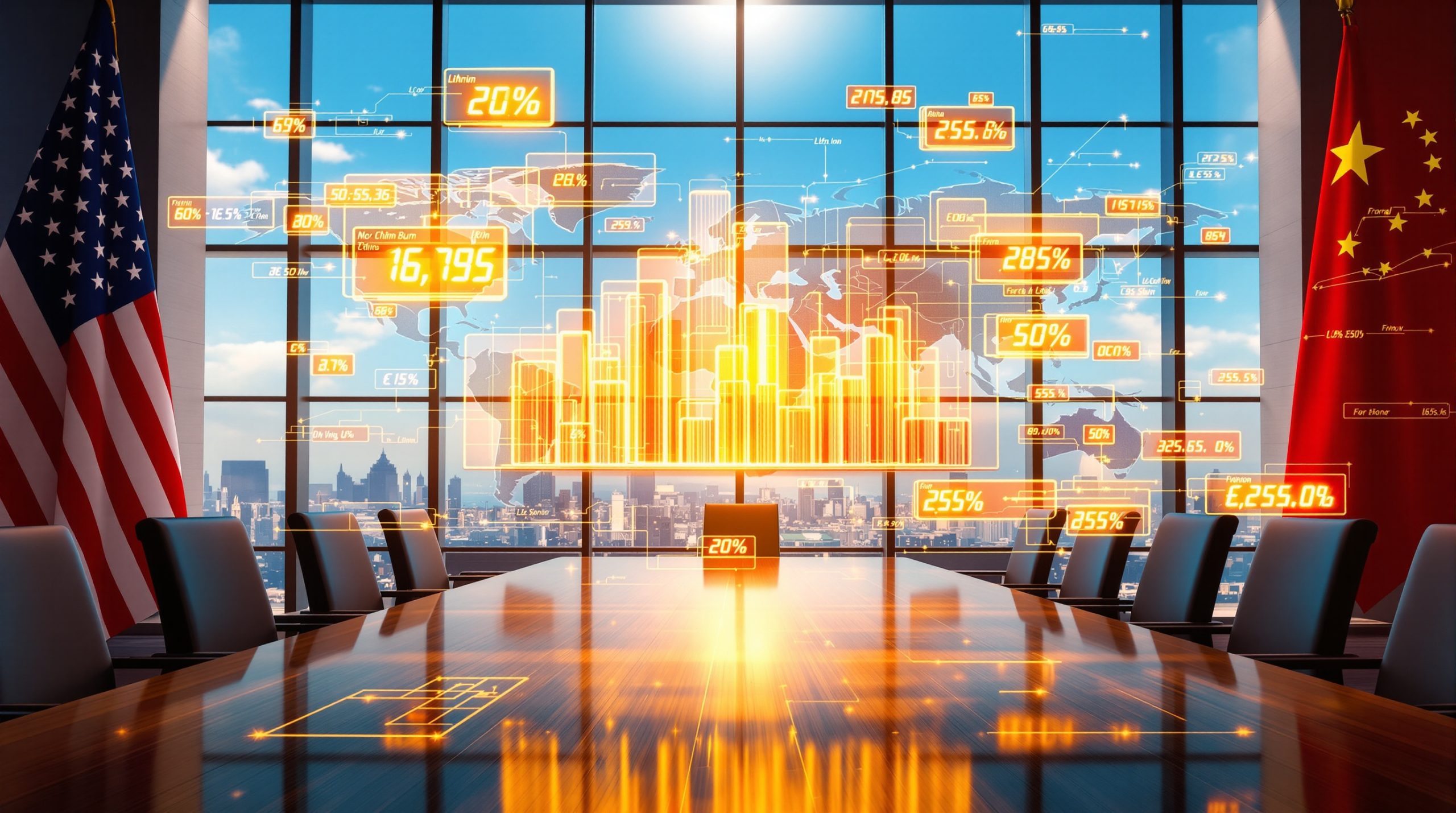Understanding the Relationship Between Tariffs and Silver Prices
The Dual Nature of Silver as Both Commodity and Precious Metal
Silver occupies a unique position in the global economy, straddling two distinct worlds – industrial commodity and precious metal. Approximately 60% of global silver consumption comes from industrial applications, including electronics, photovoltaics, and medical devices, while investment demand accounts for 20-25%. This duality creates a complex price dynamic that responds differently to economic pressures than pure precious metals like gold market analysis.
The current gold-to-silver ratio stands at a remarkable 99.44, highlighting a historically high valuation gap between the two metals. This ratio indicates that silver remains undervalued compared to gold, despite sharing many safe-haven characteristics. During periods of economic uncertainty, silver's industrial component often weighs on its performance, preventing it from matching gold's upward trajectory during crisis periods.
Recent Price Performance and Market Volatility
Silver currently trades at $32.34-$32.36 per ounce, while gold has experienced slight consolidation at $2,820, down 0.87%. This recent price action follows significant volatility triggered by tariff announcements and subsequent exemptions. Market technicians have identified evidence of new support levels forming around $29-$30 for silver, representing a potential floor established after recent price fluctuations.
The metal's recovery from earlier selloffs demonstrates its resilience, especially as investors recalibrate expectations around industrial demand and monetary policy. Unlike gold, which primarily responds to macroeconomic factors, silver's price incorporates complex supply chain considerations that directly impact manufacturing capacity and demand.
How Are Electronics Tariffs Connected to Silver Prices?
Silver's Critical Role in Electronics Manufacturing
The electronics industry represents a critical demand driver for silver, consuming approximately 7,500 metric tons annually – representing 35% of industrial demand. Silver's unmatched electrical conductivity makes it irreplaceable in high-performance applications, despite its higher cost compared to alternatives like copper and aluminum.
Key electronic components requiring silver include:
- Printed circuit boards (containing 40-60 mg silver per smartphone)
- RFID chips (200-300 mg per industrial sensor)
- Connectors and switches
- Photovoltaic cells
- Automotive electronics (1.5-2.5 oz per electric vehicle)
When tariffs disrupt electronics trade flows, they create ripple effects throughout the silver supply chain. Manufacturers may reduce production, postpone expansion plans, or seek alternative materials, all of which impact silver demand. The interconnected nature of global commodities market insights means even targeted tariffs can have outsized effects on industrial silver consumption.
The Trump Administration's Tariff Policy Confusion
Recent policy announcements have created significant market uncertainty. Initially, the administration declared no exceptions for electronics tariffs, triggering a substantial market selloff. However, subsequent U.S. Customs and Border Protection memorandum 2025-047 introduced exemptions for smartphones, computers, and semiconductor chips – creating a 14% swing in silver futures within just 72 hours.
Adding to the confusion, economic advisors later indicated that tariffs on electronics components would be implemented "in the next month or two," leaving manufacturers uncertain about future supply chain costs. This policy inconsistency complicates inventory planning for companies typically maintaining 2-4 months of silver stockpiles.
The financial markets' reaction demonstrates the significant sensitivity of silver prices to trade policy, particularly policies affecting electronics manufacturing. Each contradictory announcement has triggered volatility, with traders attempting to price in potential impacts on industrial demand.
What Happened When Previous Tariffs Were Implemented?
Market Response to April 2nd Tariff Implementation
The April 2025 implementation of broader tariffs triggered an immediate silver price correction, with prices dropping below $28 per ounce – a 22% decline over just 11 trading days. This exceeded the 18% drop observed during the 2018 trade tensions, highlighting increased market sensitivity to trade disruptions.
Significantly, industrial metals like copper fell only 9% during the same period, emphasizing silver's heightened responsiveness to manufacturing sentiment due to its dual role. The recovery to current $32+ levels coincided with Federal Reserve reassurances about maintaining 2.4% inflation targets, which reinforced precious metals' appeal as inflation hedges.
Market observers noted a strong correlation between broader equity market downturns and precious metals performance during this period, with silver initially moving in tandem with risk assets before decoupling as its safe-haven characteristics became more prominent.
90-Day Pause Strategy and Market Effects
The administration's strategic implementation of a 90-day tariff moratorium for negotiating partners temporarily stabilized silver prices in the $30.50-$31.25 range. This negotiation window created breathing room for supply chains but introduced long-term uncertainty about eventual policy outcomes.
COMEX data reveals manufacturers accelerated forward purchasing during this pause, securing 6-month silver contracts at 3% premiums above spot. This strategic stockpiling indicates that Trump policies impact may be embedding permanent risk premiums into industrial metal markets, regardless of final policy implementation.
The pause strategy demonstrates how temporary exemptions significantly influence supply chain planning, with downstream effects on metal prices. Companies positioned at crucial supply chain junctures have begun maintaining higher inventory levels as insurance against future disruptions, adding sustained upward pressure on prices.
Why Would Silver Prices Rise Despite Tariff Exemptions?
The China Connection
China dominates global electronics manufacturing with a 68% market share, making tariff exemptions for consumer electronics essentially de facto subsidies for Chinese manufacturers. Beijing's Strategic Silver Reserve released 1,200 metric tons in Q1 2025, initially suppressing prices, but exemption-driven production surges could increase China's annual silver imports to 15,000 metric tons.
This increased import activity would tighten silver supplies in Western markets, creating upward price pressure despite apparent tariff relief. Market analysts note that China's export restrictions cannot match its manufacturing needs, making it permanently dependent on imports to sustain electronics output.
The interconnected nature of global supply chains means that even targeted exemptions can reshape silver flows across regions, creating localized shortages and delivery premiums in markets distant from the original policy decisions.
Industrial Demand Factors
Post-exemption manufacturing rebounds could boost silver consumption beyond pre-tariff forecasts. Current analyst projections suggest:
- 8-12% quarterly growth in 5G infrastructure deployments
- 15% expansion in automotive sensor production
- 22% surge in solar panel manufacturing
Each 1% increase in electronics output correlates with approximately 0.7% growth in silver demand, potentially offsetting tariff-related drags in other sectors. The exemption of high-volume consumer electronics like smartphones and computers preserves the largest segment of electronics-related silver consumption.
Compared to other industrial metals, silver's price elasticity shows greater sensitivity to production volume changes. While copper, nickel, and aluminum typically see 0.3-0.5% price movements per 1% production change, silver historically demonstrates 0.8-1.2% price sensitivity to the same production shifts.
Is Silver Establishing a New Support Level?
Technical Analysis of Recent Price Action
Technical indicators strongly suggest that the $29-$30 range is emerging as silver's new support floor. This zone aligns with multiple technical factors:
- The 200-day moving average at $29.85
- Fibonacci 61.8% retracement of the 2023-2025 rally at $29.40
- Volume-weighted average price (VWAP) since Q4 2024 at $30.12
Previous support levels from 2023's banking crisis have been tested and validated during recent selloffs, with strong buying emerging whenever prices approach $29. Chart patterns show declining volume on downward moves approaching this zone, indicating exhaustion of selling pressure.
A sustained break below $29 would invalidate this support thesis, potentially triggering algorithmic sell orders with targets near $26.50. However, current price action shows increasing rejection of sub-$30 prices, with progressively shorter duration below this threshold.
Silver as an Inflation Hedge
While official inflation figures stand at 2.4%, silver's 2025 performance (+18% YTD) significantly outpaces traditional inflation hedges:
- Gold (+14%)
- TIPS (+5.3%)
- Real estate (+6.8%)
Historical analysis demonstrates that silver typically outperforms gold by approximately 22% annually during stagflationary periods, making it particularly relevant given current slowing GDP growth forecasts combined with persistent inflation.
Silver's industrial applications provide an additional inflation hedge dimension compared to gold, as manufacturing inputs often lead consumer price increases by 3-6 months. This forward-looking inflation indicator aspect enhances silver's appeal during periods of uncertain monetary policy.
How Should Investors Approach Silver in This Environment?
Effective Silver Investment Strategies
Dollar-cost averaging (DCA) continues to prove optimal given silver's inherent volatility. Comprehensive backtesting of 2010-2025 market data reveals:
- Monthly DCA yielded 9.2% CAGR
- Quarterly DCA produced 8.1%
- Lump-sum timing strategies averaged just 5.4%
Enhanced DCA strategies – doubling purchases during significant 10%+ drawdowns – improved returns to 11.7% CAGR over the same period. This approach capitalizes on silver's characteristically deep corrections without requiring precise market timing.
Common mistakes that lead to investor losses include chasing momentum during rapid price advances, failing to maintain sufficient exposure during extended consolidation periods, and abandoning positions during normal cyclical corrections. Establishing predefined purchase and sale targets helps mitigate emotional decision-making.
Physical Silver vs. Paper Silver Considerations
Physical silver premiums have widened considerably to 18-22% above spot prices, compared to just 3-5% for ETF-based exposure. Storage costs for a $100,000 physical position average $1,200 annually, favoring paper instruments for short-term tactical positions.
However, physical holdings eliminate counterparty risks highlighted by the 2024 London vault audit discrepancies, which revealed a 3.8% shortfall between reported and verified holdings. For long-term strategic allocations, many investors prefer the certainty of direct ownership despite higher acquisition costs.
Liquidity considerations vary dramatically between investment vehicles, with ETFs offering near-instantaneous execution at spot-adjacent prices, while physical sales during volatile periods can face dealer backlogs of 2-3 weeks and wider bid-ask spreads of 25% or more.
FAQs About Tariffs and Silver Prices
Will electronics tariffs definitely be implemented?
As of April 14, 2025, the administration maintains contradictory positions regarding electronics tariffs. While U.S. Customs exemptions (Directive 2025-19) currently cover consumer electronics through June, the Office of Trade Advisory 45-T indicates industrial component tariffs could begin as soon as July 1.
The final implementation timeline depends largely on ongoing trade negotiations, with particular sensitivity to electronics manufacturing supply chain impacts. Market analysts currently assign a 65% probability to some form of targeted electronics component tariffs by Q3 2025, though the specific product categories remain undefined.
How much silver is used in typical electronic devices?
Contemporary electronic devices contain varying amounts of silver based on their complexity and performance requirements:
- Smartphones: 40-60 mg
- Laptops: 120-150 mg
- Industrial robots: 1.2-1.8 oz
- Utility-scale solar inverters: 14-16 oz
Recycling rates for electronics-derived silver have improved to 28% globally, though this represents just 15% of annual industrial consumption. The miniaturization trend in consumer electronics has reduced per-unit silver content by approximately 3% annually, though this is offset by higher production volumes and increased complexity.
What happened to silver prices during previous trade tensions?
The 2018-2019 U.S.-China trade war saw silver decline 18% versus gold's 12% gain, reflecting silver's greater industrial sensitivity. However, the manufacturing-exemption dynamic in 2025 creates novel upward pressure absent in prior conflicts.
Recovery patterns from previous trade-related selloffs typically showed V-shaped rebounds for silver, with price recovery occurring over 2.5-3.5 months following policy clarification. The critical difference in current market conditions is the targeted nature of exemptions, which preserves significant portions of industrial demand.
How do other commodity prices correlate with silver during tariff disputes?
Current 2025 correlation coefficients reveal silver's hybrid nature:
- Copper: +0.72
- Crude oil: -0.34
- Gold: +0.61
These correlations suggest silver behaves as a hybrid industrial-precious metal during trade wars, unlike gold's pure safe-haven profile. The negative correlation with oil prices indicates that energy cost pressures in manufacturing have a stronger influence on silver than petroleum's general economic barometer function.
During the initial phase of tariff implementation, silver typically correlates more strongly with industrial metals, but as economic uncertainty increases, its correlation with gold strengthens. This transition period creates unique trading opportunities for commodity spread strategies exploiting shifting correlations.
For investors interested in broader market exposure, understanding how to invest in mining stocks guide can provide additional diversification beyond direct silver ownership.
Ready to Spot the Next Major Mineral Discovery?
Discovery Alert's proprietary Discovery IQ model delivers instant notifications when significant mineral discoveries are announced on the ASX, giving you the crucial edge for both immediate trades and long-term investments. Explore how historic discoveries have generated substantial returns by visiting our discoveries page and start your 30-day free trial today.




